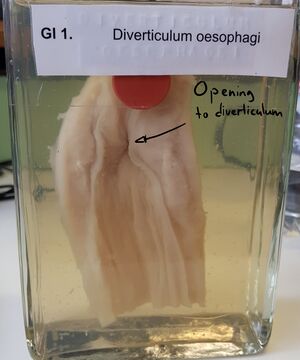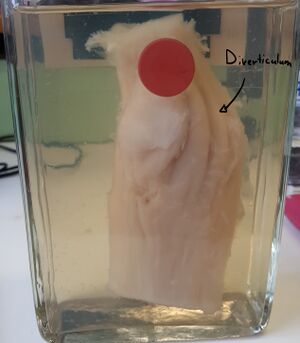1. Esophageal diverticulum
Organ: Part of oesophagus
Description:
On the front of the preparation can we see an opening. On the back can we see the outpouching itself.
Diagnosis: Zenker diverticulosis
Cause:
- Underlying motility disorder
Theory:
Zenker diverticulosis is one of the three types of oesophageal diverticulosis. It’s characterized by its anatomical location above the upper oesophageal sphincter. It’s also the most common type, and the outpouching always faces the posterior side. Zenker diverticulosis is a pseudodiverticulosis.
The diverticulum can compress the trachea. The most common symptom is dysphagia and food being trapped inside the diverticulum, from which it can be regurgitated or produce bad smell. Trapped food may also lead to perforation of the diverticulum, which can cause infection to spread to the mediastinum, yielding potentially deadly mediastinitis. However, it is often asymptomatic.
Because only a part of the oesophagus is present is it actually impossible to determine the exact anatomical location of the diverticulum just by looking at the prep. However, we know that this is a Zenker from before the prep was made.


